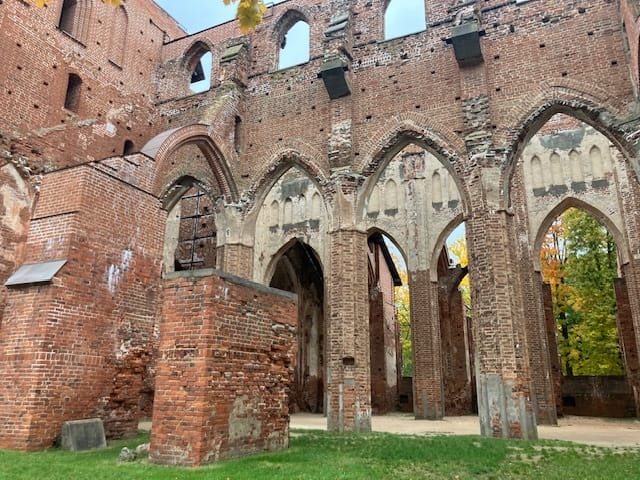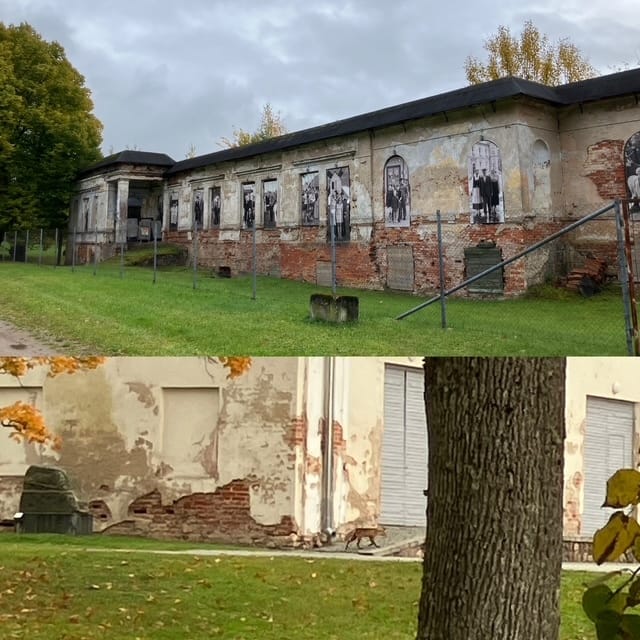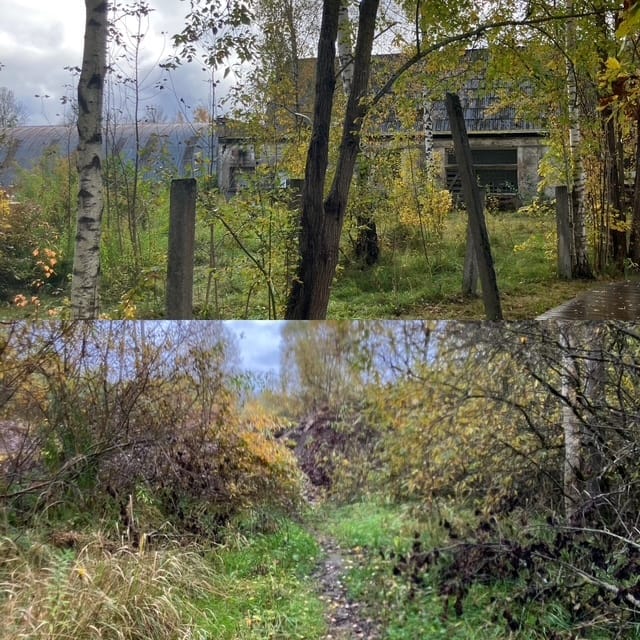- Rose-Coloured
- Posts
- AMT Takes Rose-Coloured to Estonia
AMT Takes Rose-Coloured to Estonia

This is a Linguist-in-Chief Anne-Michelle Tessier guest post, which we have not seen in a while, possibly because her main non-Rose-coloured job is teaching linguistics, which has been in ever fuller swing in the past few couple months. Also because she has been in Estonia. But she is back now and has written about it, so we too can experience Estonia, albeit vicariously. It’s a great post but does lack dogs—AMT has written about them elsewhere if you need a canine fix.
A typically odd set of circumstances got me to Estonia. There was call for papers for a conference at the University of Tartu; my recently-graduated student’s terrific dissertation involved a lot of Estonian languages; I grew up surrounded by a lot of Estonian-Canadians because I did rhythmic gymnastics for 13 years (did you not know how Estonian rhythmic gymnastics is?); I suggested we submit a joint abstract… And so it was that last week I blearily emerged into the Tallinn airport – which I swear to you looks precisely as if the Lansing, Michigan airport had been built inside an IKEA. (I will not be taking any questions at this time and yes I know IKEA is Swedish.)

Very old brick building with many archways that is both quite beautiful and doing a bad job of a being a building (ie., not keeping out the grass and trees).
Of course, I had a splendid time. Tartu has been home to the national university for almost 400 years, and its oldest cathedral ruins date to the 1200s; it’s full of windy cobblestone streets, shabby-chic college bars and interesting river bridges, and its most picturesque medieval neighbourhood is inexplicably called SoupTown. I enjoyed SO many seafood-based open-faced sandwiches (though no soup). And the trip earned many other memorable tidbits: that we stumbled onto a potential Tellytubby cult in some ancient woods; that Estonians really love a cloakroom (which the francophone in me loved to see they call a ‘garderoob’); that the University pipes birdsong into its museum bathrooms and the locals will not acknowledge that this was odd? … But the thing I really want to tell you about is the ominous land of time-warp that waits half an hour’s walk out of town, and also deep into a dark past.

Very new glass-walled building with enormous black roof that overhangs…more glass and also surrounding countryside? Something of a trompe l’oeil effect.
The Estonian National Museum lived up to its considerable hype, and if you’re interested in the cultures of the peoples who once spoke Finno-Ugric languages or you’ve ever wondered how many different traditional ways you can grate a cabbage, I cannot recommend it highly enough. (The giftshop is also dreamy, and you might well be getting a postcard soon.) But my initial impression outside the museum’s massive building of concrete and glass, which lurks low and long atop a mild rise in the landscape, was that the surrounding park area was also worth exploring? So I exited the museum with a couple hours of daylight left and set off behind the building, past a charming lake (man-made?), some red brick ruins (WWII era?), some old train tracks artfully half-covered with grass, and by now it had started spitting so I quickened my step and passed through an archway into … a dream-like spy novel.
I stood in an expansive courtyard, alone and surrounded by abandoned grass and failing buildings. This had surely once been the grounds of an old-world manor house, scenes of whimsy and splendour, but recent times had not been kind; in some places the house was bricked up, and other places bore signs of grim Soviet repurposing. One long outbuilding (once stables? kitchens? both?) had been left almost entirely to rot, wreathed in barbed wire – except that the plywood covering its generous window openings were also decorated with vintage black and white photos of happy mid-century Estonians, smiling and playing at the beach. Um, what?

Disintegrating but picturesque buildings, with fox friend.
Of course, all of those people are now dead, I immediately thought and wished I hadn’t.
I kept walking, almost sure I was going to set off a tripwire and be arrested by the KGB. (Later I read in a BBC travel piece that Graeham Greene’s story Our Man in Havana was in fact based on his experiences not in Cuba but in Tallinn.) I followed a gravel path lined with silvery poplars, which lead in one direction to a grand half-broken driveway and in the other to a Cold War-era watchtower, the best-preserved structure around me. At that moment, an implausible fox loped out from between the trees. He trotted along silently past broken roof tiles and forgotten porticos, stopped to give me a quizzical stare -- oh, are you here too? – and disappeared into an unseen hole.
The silence was getting louder. I did not care to stay longer.
***
Once I regained sight of the Museum, I resumed a normal walking pace and headed back to Tartu’s downtown, fairly confident it was 2025 again. Following Google Maps, I proceeded down a long straight road flanked by forest and field, half-watching my feet while also engrossed in a series of Wikipedia pages on my phone about Raadi Manor (first a centuries-old estate, then early museum site, then war casualty…) and the Tartu Offensive (the 1944 battle between German and Soviet forces, in which spoiler alert everybody lost…) Ultimately I read that in 1940, Soviet forces had commandeered 100 hectares all around me for the largest military airport in the Baltic, housing 100 bombers for the next 50 years. This explained the decrepit hangars I was passing, and the feelings of oppressive yet open space I was experiencing, and by the way where exactly was Google Maps taking me? I took stock of my surroundings, and saw that the alleged way forward was … increasingly unconvincing.

Estonian wilderness.
Was I even on public land? Was I being written by John Le Carré? Would I survive to see another open-faced sandwich? I dithered in a small lather of indecision, spoke sternly to myself about flights of fancy, scrambled through some underbrush, and finally found a little road.
It was not an especially comforting road, though. I had emerged into a series of rural semi-alleys, lined exclusively with grim blocks of padlocked garages and the occasional rusted-out Lada knock-off. I attempted to adopt a jovial and purposeful gait, as though out for my normal late afternoon stroll, even as I passed amateur welders working roadside on questionable machinery, and suspicious older men with cloth caps on bicycles headed to god knows what rendezvous. After perhaps 15 minutes preparing for my imminent interrogation, I suddenly came upon a kindergarten-cum-community garden, then a little traffic circle with a dry cleaners and a church, and then I was back in Tartu proper, barely five blocks from my AirBnb.
Shrugging off the adventure, I continued with my privileged Westerner's academic holiday to an EU country. But don’t think I have forgotten that a parallel universe Anne-Michelle is still out there, operating resistance radios and sabotaging munitions depots in the yards behind the Estonian National Museum. I am much the richer for having seen a glimpse of her between the trees. I hope she’s friends with that fox.
Reply